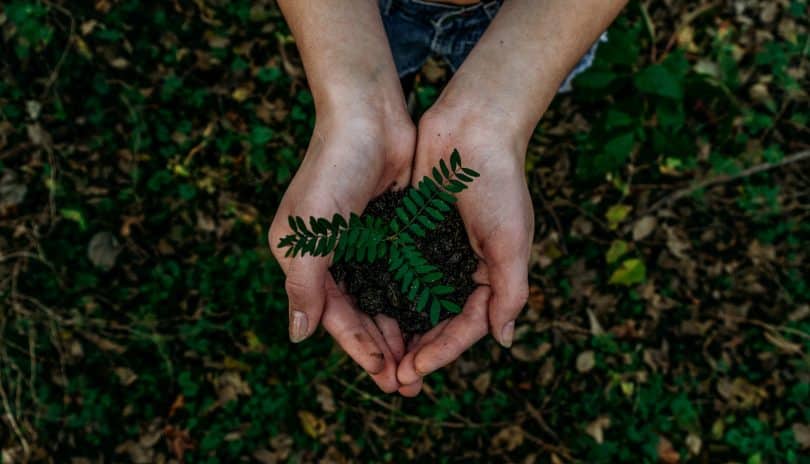Sustainability has been an important topic of conversation over the past few years. Both companies and individuals are keen to find alternative production and living methods that meet our present requirements without impacting future generations.
The three main focuses of sustainable policies are environmental, economic and social issues. This includes climate change, which is caused by the rate that the human race is using natural resources and the creation of greenhouse gasses. Economic systems are also affected by the lack of resources due to increased demand. As such, people around the world are exploited and lack basic human rights as companies try to cut costs and keep up with production.
We’ve listed 10 ways that you can lead a more sustainable lifestyle to help the environment and global communities.
Contents
10 ways to be more sustainable in 2022
1. Use less plastic
Plastic is probably the most well-known source of pollution as we produce and discard so much of it. An average of 12 million tonnes of plastic enters the marine environment each year, all of which will take hundreds of years to break down. The synthetic material spreads toxins and is extremely harmful to wildlife if they consume it or get caught in the debris.
There are lots of ways that you can reduce plastic in your life. For example, you could reduce the amount of plastic in your wallet by using virtual debit cards instead of physical ones. Plastic cards have an average carbon footprint of 150 gr per card and are often single-use. Virtual cards, therefore, eliminate the need for plastic and subsequent carbon emissions.
You could also try using reusable water bottles, avoiding excess food packaging and taking your own bags when you got out shopping. You can also make your own eco-friendly cleaning products to limit the use of harmful chemicals and plastic bottles.
2. Buy Fairtrade products
Fairtrade products are guaranteed to originate from companies that pay and treat their workers well. This means that the products are ethically sourced and made to a high quality.
There are many benefits to Fairtrade businesses that are interwoven with one another. The workers are guaranteed a minimum wage that prevents exploitation and allows them to buy essential goods. They are also able to save money, which can help to improve their living conditions and build a stronger future for the following generations.
Productivity and quality of products improve for farmers that are treated well, which helps to implement better farming practices that create a strong infrastructure in the local area.
Proper training can also help the environment as Fairtrade farmers are educated on how to switch to eco-friendly practices that will benefit the land in the long run.
3. Buy sustainable clothing
Fast fashion has had a major impact on the environment in recent years. The clothes aren’t made to last, which means that hundreds of thousands of tonnes are thrown away each year. This puts extra demand on landfills, as polyester and other materials take a long time to decompose.
These types of clothes are produced using toxic chemicals and dyes, which contaminate the water supply and harm both wildlife and humans.
Luckily, there are plenty of ethical fashion brands that produce clothes in a sustainable way. They recycle old material and use alternative methods and machinery to reduce dangerous waste products. This small change to your purchasing habits means that you will be buying better quality clothes that are made using sustainably sourced materials and methods.
4. Drive less
Cars are a major source of greenhouse gas emissions such as carbon dioxide and carbon monoxide. This gas contributes to global warming, which is having a detrimental effect on ecosystems around the world. The ozone layer protects us from harmful UV rays, but they will be able to get through if the layer is irreparably damaged.
Car exhausts also emit sulphur dioxide and nitrogen dioxide, which creates acid rain when it mixes with rainwater. Acid rain can damage vegetation, roads and buildings over time.
You can cut down on your car journeys by taking public transport, riding a bicycle or walking to your destination. Sharing transport reduces the levels of gas emissions, whilst riding a bike or walking are both completely green alternatives. They will dramatically reduce your carbon footprint
5. Eat less meat
The meat industry is behind a large proportion of the world’s greenhouse gas emissions, as well as the consumption of the world’s fresh water supply. Access to animal products is also limited in developing countries when compared with the amount that people in industrialized countries eat. This means that there is an oversupply of farm animals that the farmers in developing countries can’t afford to buy themselves.
By cutting out meat from your diet, you will help to reduce the demand for animal products. You will also be helping to stop the production of meat in factory farms, where animals have a poor quality of life.
6. Save energy
There are countless reasons to save energy in your day to day life. It will reduce carbon emissions, as well as result in better air quality and reduce our consumption of fossil fuels. Another great bonus is that it will save you money in the long run.
Some of the ways you can save energy include turning off your electronic devices, turning down your thermostat and being more careful with your water usage. This could include using less water when you are washing up and buying a more efficient shower. It’s also important to insulate your house so that less heat escapes through the windows and roof, which in turn will reduce your heating output and energy bills. Your energy consumption can also be reduced by investing in renewable energy sources such as solar panels and wind turbines for your home.
Besides these, you can install dcbel r16 — a home energy station that converts solar energy to electricity with optimal efficiency. You can use it to power every aspect of your daily life. Imagine never worrying about power outages again while saving energy.
Your energy consumption can also be reduced by investing in renewable energy sources such as solar panels and wind turbines for your home.
7. Make do and mend
Rather than throwing out your old clothes, you can recycle them to give them a new lease of life. You can learn a few basic sewing techniques to patch up holes in your garments or to update an item. This will help reduce the demand for fast fashion and the resulting toxins that are released into the environment from the production.
Clothes take decades to decompose and they release harmful gases when they eventually start to do so. By repairing your old clothes, you are extending their lifespan and limiting the number of new items that you need to buy. You should also consider taking your clothes to charity shops or swapping them with friends if you’d still rather be rid of them but don’t want to send them straight to the landfill.
8. Develop your garden
There are plenty of ways you can make the most of your green space if you are lucky enough to have a garden. Growing flowers is just one way that you can help improve your local environment. You can grow your own bouquets, which reduces carbon emissions from flower imports.
Planting a tree is a great way to leave a sustainable mark on the world. Trees are great at drawing carbon dioxide out of the atmosphere and acting like carbon capture and storage machines. They are also a good habitat for wildlife, including hundreds of species of birds and insects.
You don’t even have to spend hours in the garden to make a positive impact on the environment. Just having a garden full of grass and wildflowers can help rainwater drain away and reduce flooding in the surrounding areas. Flowers also attract bees and other pollinators, as well as helping to maintain good soil conditions, conserve water and purify the air against nasty toxins.
9. Use cruelty-free makeup
Looking after animals is an important part of creating a sustainable future. Cosmetics companies are infamous for testing their products on animals, which can lead to serious injuries and death. You can help stop this practice by buying cruelty-free beauty products that haven’t been tested on animals.
Cruelty-free makeup often uses natural ingredients that have fewer toxins and chemicals that can harm the environment. Laboratories that test on animals also produce a large amount of contaminated waste, which will be released into the eco-system once it is disposed of.
You can check to see whether cosmetic products are cruelty-free by looking for the leaping bunny logo on the packaging, or by using online databases that list the companies that don’t test on animals.
10. Reduce waste
The average US citizen produces around 4.9 pounds of waste per day. Food waste is one of the biggest contributors, along with the plastic packaging that it comes in. You can put some of your vegetation food waste into a compost bin, which will break down and can then be used in your garden or indoor plant pots.
One of the easiest ways to reduce waste is to pay attention to what you are buying and review whether you really need the product. It’s very easy to be taken in by sales in shops, but you may end up throwing the items away before you make proper use of them. Reviewing your shopping habits can also help you to save money in the long run.







